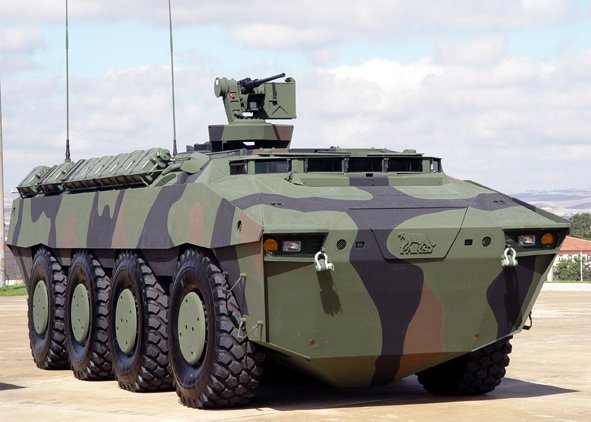Competition, a global defense market and targeted research and development spending will be critical in preserving the nation’s defense industrial base during the slowdown in Pentagon spending, Deputy Defense Secretary William J. Lynn III said here last night.
In keynote remarks at the Intrepid Sea, Air and Space Museum for the Royal Bank of Canada Defense and Aerospace Conference, Lynn said that because preserving the industrial base’s capabilities is crucial, the Defense Department is developing a roadmap to do it effectively in an era of limited funding.
The defense industrial base is a relatively recent development in U.S. history, Lynn said.
“Before World War II, we relied almost entirely on an arsenal system, in which the government designed and produced munitions and weapon systems,” he said. “That arsenal system was a corollary to our reliance on mass mobilization — we fought wars and then demobilized. With no large standing army, he added, the nation didn’t need a standing military industrial base.
But the risks inherent in the arsenal system became clear during World War I, the deputy secretary noted. “We were not able to produce most of the weapons and the munitions that we needed to fight that war,” he said. “We had to rely largely on the British and the French industries to supply our troops.”
The paradigm shifted with World War II, Lynn said, as the nation engaged the American industrial base, producing a tide of weapons and material that contributed enormously to winning the war — a development that largely eliminated the arsenal system and created an enduring partnership of science, industry, and the military.
“That partnership has given us the technological edge that we enjoy in battle,” the deputy secretary added, noting that the museum where he was speaking — the aircraft carrier USS Intrepid — is a testament to America’s industrial prowess.
Commissioned at the height of World War II, Intrepid saw action in the Pacific, Lynn told the audience. It was transformed into an anti-submarine carrier during the Cold War, and its flight deck — the first fitted with a steam catapult — launched planes during the air campaign over Vietnam.
“Our defense industrial base has emerged in the past three generations as a national strategic asset — an asset that is not a birthright and cannot be taken for granted,” Lynn said. “Thousands of firms — some big, others small — equip our military. These firms, their suppliers, and their suppliers’ suppliers, are the links in a chain that, if broken, can have outsize impact on our military capabilities.”
Today’s defense industrial base is more global, more commercial and more financially complex and competitive than ever before, Lynn said. “A one-size-fits-all policy is not appropriate now for the defense industrial base, if it ever was,” he added.
Therefore, Lynn said, he’s leading an effort with Ashton B. Carter, undersecretary of defense for acquisition, technology and logistics, and Brett Lambert, deputy assistant secretary for industrial policy, to put together a roadmap for ensuring the health of the industrial base as defense spending slows down.
“We’re going sector by sector, tier by tier, and our goal is to develop a long-term policy to protect that base as we slow defense spending,” Lynn said. The review will inform defense spending and acquisition decisions, he added, and also will determine how the Defense Department views merger and acquisitions proposals and activities in the defense industry.
“It will help us ensure that the taxpayers’ investment in this industrial base that we’ve built since World War II is protected,” he said.
Three themes are emerging about how to maintain a vibrant industrial base, the deputy secretary said: competition, the global defense market, and targeted spending for research and development.
Noting that vigorous competition in the defense industrial base has provided the armed forces with more reliable equipment and better technology than that of the nation’s adversaries, Lynn said normal market forces should continue to shape the defense industry, ensuring it’s exposed to 21st century technology, to technological innovation, and to capital markets.
“Not only is this good economic theory,” Lynn said, “but it yields the best goods and services for the warfighter.”
The deputy secretary recalled the last defense slowdown in 1993, when then-Defense Secretary William Perry called industry leaders to a dinner meeting at the Pentagon — a meeting that came to be known as “the Last Supper” — to tell them that reduced defense spending would require industry to consolidate to cope with a reduction in demand. The taxpayers, Perry explained, no longer could afford to underwrite the overhead of so many defense firms. In less than a decade, Lynn told the audience, 50 major companies consolidated into six. But a new Last Supper isn’t on the horizon, he added.
“We are not looking for further consolidation in the top tier of the defense industrial base,” he said. “Fewer major defense suppliers would not strengthen industry, nor would it benefit the government. Indeed, it would really represent a return to something like the arsenal system that we discarded several decades ago for good reason.”
But that doesn’t mean the Defense Department opposes all, or even most, future consolidations, Lynn said.
“Mergers and acquisitions are a normal response to budget changes, and we should not reflexively oppose this market reaction,” he said. “But we will be scrutinizing proposals that come forward to ensure that the government’s interests are protected. Adjustments that lead to greater efficiency or innovation will be welcomed. We are seeking to promote strong, well-financed businesses that avoid over-leveraging and poor balance sheets. The intent is to ensure industry emerges stronger after these structural changes.”
Meanwhile, Lynn said, the Defense Department intends to use its position as a buyer, its subsidy of research and its ability to forecast needs to boost investment, competition and innovation to the maximum possible extent while still allowing market forces to propel the sector forward.
“We are in this for the long term,” he said. “We need industrial partners and financial backers who think and act likewise. In this respect, our viewpoint is similar to long-term investment, not short-term speculation. Think Warren Buffet, not Gordon Gekko.”
The second theme emerging from the Defense Department’s study of the industrial base is the contribution international sales make in stabilizing the defense industry when U.S. defense spending slows, Lynn said.
“To keep our base healthy, it is in our interest for defense companies to compete globally,” he explained. However, he said, an “archaic” export control system is impeding that dynamic.
“It was developed during the Cold War in a peer-to-peer competition with the Soviet Union that is long gone,” he said. “The Berlin Wall is gone, but many of these export barriers remain.”
That system frequently fails in its central purpose of preventing states of concern from acquiring sensitive technologies, Lynn said, and it also makes it difficult for close allies to buy weapons from U.S. companies, even when they’re fighting alongside U.S. forces.
“The barriers that we place at this point in the export control system look something like a marriage of the complexity of the Internal Revenue Service with the efficiency of the Department of Motor Vehicles,” he said. “It’s something we have to change.”
While the export control system should build high walls around technologies that truly are sensitive, Lynn said, it also should allow U.S. companies to compete on the global market with technologies that are widely available.
President Barack Obama’s administration is working to bring about export control reform, the deputy secretary said. The administration’s proposal is built on what officials call “the four singles” — a single export agency, a single tiered list of controlled items, a single coordination center for enforcement, and a single, unified IT infrastructure.
The president and the secretaries of state, defense and commerce all are committed to export reform, Lynn said. Related progress in this area, he added, includes passage of defense trade cooperation treaties with the United Kingdom and Australia, which may set an example of how a new export control system might work.
A parallel effort seeks to change policies for technology security and foreign disclosure, Lynn said. “How we transfer sensitive technologies right now is governed by 13 pretty independent processes,” he said. “Those processes aren’t integrated, they’re not synchronized, and as a consequence they often impede our ability to equip our coalition partners.”
A corollary of ensuring U.S. firms are competitive abroad is welcoming international firms to the United States, Lynn said. EADS — a European firm — bid on the aerial tanker contract without an American partner, he noted, and a strong competition ensued in which Boeing, an American company, ultimately prevailed.
“But the real winners were our warfighters who got a great tanker and the American taxpayers who saved billions of dollars,” he said.
The third theme emerging from the Pentagon’s industrial base study is the importance of maintaining a targeted research and development program, Lynn said, noting that although defense spending plunged during the 1970s after the Vietnam War, the Defense Department made sure that promising research and development continued — with stealth technology among the results of that effort.
“Stealth technology — one of our most important advantages today — wouldn’t be available at all if it weren’t for the careful stewardship during the 1970s,” Lynn said. “Today, we need to concentrate on the technologies that we think are going to be influential in the next decade and the decade after.” Those technologies include long-range strike systems, unmanned aerial vehicles and cybersecurity, he said.
“Each of these technology areas will be critical in future conflicts,” the deputy secretary said. “We do not yet know the shape they will take. We don’t know the precise advantages they will confer. But unless we shield and protect the [research and development] investments and support them now, we’re going to deny the future decision-makers the opportunity to bring to bear these technologies in our military forces.
As part of his deficit reduction plan, the president has called for $400 billion in reductions to the defense budget over the next 12 years, as well as a fundamental evaluation of America’s missions, capabilities and role in a changing world, Lynn said.
Though these challenges are enormous, he said, the department must take them on while fighting one war, winding down another and participating in other missions around the world. “The road ahead will not be easy,” Lynn acknowledged, but he invoked a favorite saying of Defense Secretary Robert M. Gates: “Difficult is not impossible.”
“The challenge for us is to manage this slowdown in defense spending without disrupting the capabilities of the world’s most effective fighting force,” Lynn said. “The best outcome would be for contractors to continue to earn fair profits for superior performance, the department to get quality products for an affordable price, and the taxpayer to be able to underwrite our security at an acceptable cost.
“I believe such an outcome is well within reach,” he continued. “But we need to continue to execute the lessons of making tough choices early, prioritizing now, balancing our reductions and avoiding precipitous cuts.”











